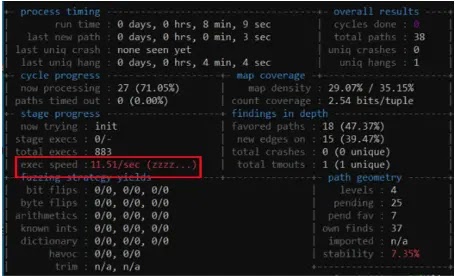In today’s digital landscape, comprehending domain and IP information is essential for individuals engaged in online activities, ranging from web developers to cybersecurity professionals.
This article examines two powerful tools—Whois and Dig —that can assist in uncovering critical details regarding domains, domain names, and their associated IP addresses.
We will provide an overview of the types of data these tools can offer, along with step-by-step instructions for utilizing each tool. Additionally, we will discuss their limitations, such as inaccuracies in data retrieval, and explore potential alternatives.
Engaging with this content will enhance your knowledge and expand your toolkit for effectively navigating the web.
What are Whois and Dig?
Table of Contents
- 1 Understanding Domain Information
- 2 Using Whois to Gather Domain Information
- 3 Understanding IP Information
- 4 Using Dig to Gather IP Information
- 5 Limitations and Alternatives
- 6 Frequently Asked Questions
- 6.1 What is Whois and how can it be used to gather domain and IP information?
- 6.2 What is Dig and how does it differ from Whois in gathering domain and IP address information?
- 6.3 How can I use Whois to find out who owns a specific domain name or IP address?
- 6.4 Is there a way to use Dig utility to gather information on a specific IP address?
- 6.5 Can Whois and Dig be used to gather historical information on a domain or IP address?
- 6.6 Are there any limitations to using Whois and Dig to gather domain and IP information?
WHOIS and dig are powerful command-line utilities that function as essential tools for retrieving domain name information. These utilities enable users, including security professionals and network operators, to query various types of information related to domain names, ownership details, IP addresses, and DNS records.
The significance of these tools is underscored by their roles in safeguarding digital assets and enhancing online security. For instance, WHOIS can reveal important details about a domain’s registrar, expiration dates, registrar WHOIS information, and the contact information of the registrant, which can be instrumental in identifying potential threats or fraudulent activities.
Conversely, dig allows users to execute DNS queries to obtain real-time data regarding the configuration of name servers. This capability is crucial when troubleshooting internet connectivity issues, verifying domain setups, or gathering information for penetration testing.
Organizations such as Google LLC leverage these utilities for network optimization, while services like MarkMonitor utilize them for brand protection, ensuring that their clients’ domains are not compromised or misused.
Through these methodologies, both WHOIS and dig enable professionals to make informed decisions and effectively manage their online presence.
Understanding Domain Information
Understanding domain information is essential for network operators and security professionals, as it includes a range of data points such as domain names, ownership details, DNS records, IP address allocations, and more.
This data is accessible through various information services, including the WHOIS server. Such information is invaluable for tasks such as penetration testing, information gathering, and ensuring robust network security, thereby constituting a vital component of network security and management.
What Domain Information Can Be Gathered?
A variety of domain information can be obtained through WHOIS and dig, including registrar WHOIS data, domain status, name server management, name servers specifications, and abuse contact details. This information is essential for evaluating the integrity of a domain and its associated services.
This comprehensive data enables security professionals to ascertain the legitimacy of a domain by reviewing registrar details such as registration dates and ownership histories. The domain status offers valuable insights into its current operational state, aiding in the identification of any issues that may pose potential security threats.
Furthermore, effective name server management is crucial for network operators, as it allows for the control and redirection of web traffic. Access to abuse contacts can enhance response times in the event of malicious activities, ultimately strengthening the overall defensive measures in place.
Using Whois to Gather Domain Information
Utilizing WHOIS to obtain domain information is a systematic process that entails executing specific command line queries to retrieve registrar details, domain status, IP address information, and other critical data points.
This utility enables users, particularly network operators and security professionals, to effectively employ query examples to access the essential information required for managing domain names and evaluating potential configuration issues.
Step-by-Step Guide
To effectively utilize WHOIS for gathering domain information, one should adhere to the following steps:
- First, access the command line interface and input the appropriate command syntax to initiate a query for specific domain registration details.
- Upon entering the command, press Enter, and a comprehensive array of information related to the domain will be displayed, including registration dates, expiration dates, and nameserver details.
- While interpreting the output, it is important to identify key sections that provide the registrar’s contact information and the registrant’s details, as these can assist in determining the owner of the domain.
Employing WHOIS can prove invaluable for troubleshooting domain-related issues, verifying ownership, and even planning future domain acquisitions, thereby establishing it as an essential tool for web administration and management. WHOIS queries can be particularly useful in identifying the IP range associated with a domain, further aiding in network diagnostics and security assessments.
Understanding IP Information
A comprehensive understanding of IP information is essential for network operators and security professionals, as it includes critical data such as IP address allocations, Autonomous System numbers, and specifics regarding internet protocol configurations. This information is instrumental in maintaining optimal network security and an efficient information retrieval process.
This information is vital for various tasks, including information gathering, troubleshooting network configurations, and ensuring optimal network security.
What IP Information Can Be Gathered?
A comprehensive set of IP information can be compiled, encompassing details such as IP addresses, registrar data, associated DNS records, and abuse contact information. This information is essential for effectively managing network infrastructure and addressing security concerns.
By analyzing specific elements, such as IP address ranges, one can discern the scope of an organization’s network usage and identify potential vulnerabilities. DNS records are integral to the functionality of a website, significantly impacting both performance and security; therefore, a thorough understanding of their configurations is critical for preventing various cyberattacks.
The importance of registrar data should not be overlooked, as it provides valuable insights into domain ownership and facilitates the prompt resolution of incidents, particularly when abuse contact details are readily accessible.
This extensive array of information enables network managers to strengthen their defenses, thereby ensuring a robust security posture.
Using Dig to Gather IP Information
Utilizing the “dig” command to obtain IP information is an effective method that enables users to perform specific DNS queries via the command line. This approach facilitates the retrieval of detailed query results related to domain name resolutions and their corresponding IP addresses, thereby enhancing one’s capacity to manage network configurations proficiently. Dig commands, such as query examples, can be executed to retrieve various record types required for different network diagnostic purposes.
Step-by-Step Guide
To utilize the dig utility effectively for gathering IP information, one should adhere to the following steps in a TCP-based query response manner:
- First, access the command line interface and execute the dig command using the appropriate syntax to perform DNS queries for specific domain names.
- Upon opening the command line interface, it is important to structure your query methodically. You may specify the type of DNS record you wish to retrieve, such as:
- ‘A’ for IPv4 addresses
- ‘AAAA’ for IPv6 addresses
- ‘MX’ for mail exchange records
Limitations and Alternatives
While WHOIS and dig are fundamental tools for obtaining domain and IP information, it is important for users to recognize their limitations, which include potential inaccuracies in data retrieval and restrictions regarding the information services they can access. Users may need to consider alternative methods involving different service providers or utilizing specialized software to gather comprehensive domain and IP information.
Therefore, it may be necessary to explore alternative options to ensure comprehensive data collection and analysis.
When to Use Other Tools
There are specific circumstances in which it is prudent to utilize alternative tools instead of WHOIS and dig for information gathering, particularly when more accurate, real-time, or extensive data regarding domain ownership and network security is required. Tools suitable for digital forensics analysis or threat intelligence can be advantageous in such scenarios.
For example, in high-stakes cybersecurity investigations, professionals may find that employing specialized software capable of aggregating information from multiple data sources can provide a comprehensive overview of domain histories and associated IP addresses. Additionally, using information services like ARIN databases can enhance the accuracy of their findings.
Likewise, during a digital forensics analysis, online services that consolidate threat intelligence can offer valuable insights into malicious activities linked to a specific domain—an aspect that traditional methods may neglect. Furthermore, leveraging online services like DigitalOcean can facilitate a deeper understanding of potential threats and vulnerabilities.
Furthermore, when conducting competitive analysis, tools that deliver in-depth analytics and market trends related to domain usage can provide a broader context, facilitating strategic decision-making that extends beyond the ownership details obtained from WHOIS queries. Utilizing registrar information can further aid in formulating effective strategies based on the gathered data.
Frequently Asked Questions
What is Whois and how can it be used to gather domain and IP information?
WHOIS is a TCP-based utility tool for querying databases that store registered users or assignees of an internet resource, such as a domain name or an IP address. It provides a human-readable format of various data points including ownership details, DNS records, and more.
Whois is a TCP-based web lookup tool that provides information services about the registered owner of a domain name or IP address. It can be used to retrieve contact details, registration date, domain status, and other administrative information for a specific domain or IP.
What is Dig and how does it differ from Whois in gathering domain and IP address information?
Dig is a command-line utility tool used to gather and display DNS information for a specific domain. Unlike Whois, it provides more in-depth information such as DNS records, name servers, and IP addresses associated with a domain. Dig commands can also include query examples and details about mail servers.
How can I use Whois to find out who owns a specific domain name or IP address?
To use Whois, simply visit a Whois lookup website, also known as a WHOIS server, and enter the domain or IP address you want to gather information on. The query response results will display the name, contact information, registrar information, and other details of the registered owner.
Is there a way to use Dig utility to gather information on a specific IP address?
Yes, Dig can be used to gather DNS information for a specific IP address. By using the reverse DNS lookup option, Dig can retrieve the domain name associated with an IP address, as well as other DNS records for that IP. This is useful for network operators and security professionals performing penetration testing and information gathering.
Can Whois and Dig be used to gather historical information on a domain or IP address?
Yes, both Whois and Dig can provide historical information on a domain or IP address. Whois can show past ownership details and registration dates, including registrar WHOIS and client update records, while Dig can display historical DNS records and changes to a domain’s configuration. This includes information on previous network infrastructure and IP ranges.
Are there any limitations to using Whois and Dig to gather domain and IP information?
Yes, there are some limitations to using Whois and Dig. Some registrars may have privacy protection in place, which hides the contact information and abuse contact of the domain owner. Additionally, not all domains and IP addresses may have publicly available information through these tools. Registrar data and response data may be limited depending on the service provider and domain registration policies.



